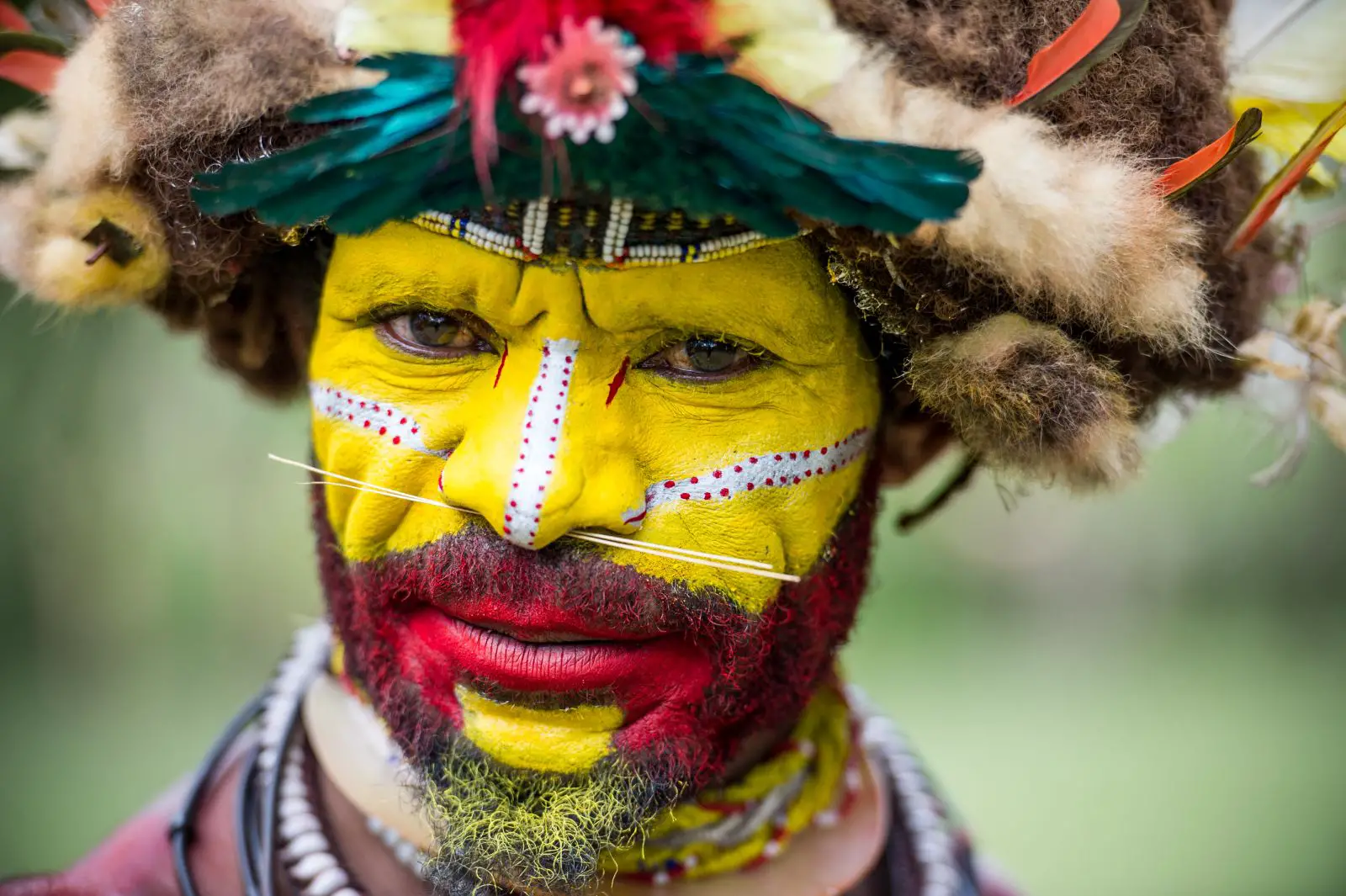Man as Art - Huli people
The Huli are one of the largest ethnic groups in the Southern Highlands Province of Papua New Guinea.

Stats
- Population
- Location
- Status
The Huli are one of the largest ethnic groups in the Southern Highlands Province of Papua New Guinea. They are well-known for their elaborate traditions, including their distinctive hairstyles, which involve intricate decorations made from their own hair.
The Huli people traditionally live in small villages scattered across the rugged terrain of the highlands. They practice subsistence agriculture, primarily growing sweet potatoes, which form the staple of their diet. Pig farming is also common among the Huli, and pigs hold significant cultural and economic value in their society.
One of the most famous aspects of Huli culture is their traditional wigmen, who are skilled in crafting and wearing elaborate wigs made from their own hair. These wigs are adorned with feathers, flowers, and other decorations and are worn during ceremonial occasions such as singsings (traditional festivals) and rituals.
The Huli society is organized into clans, with social structures and relationships governed by intricate kinship systems. Like many other indigenous peoples of Papua New Guinea, they have a rich oral tradition, passing down stories, myths, and legends from generation to generation.
In recent years, the Huli people have faced various challenges, including the pressures of modernization, environmental degradation, and social changes. However, they continue to maintain their cultural identity and traditions while also adapting to the evolving world around them.